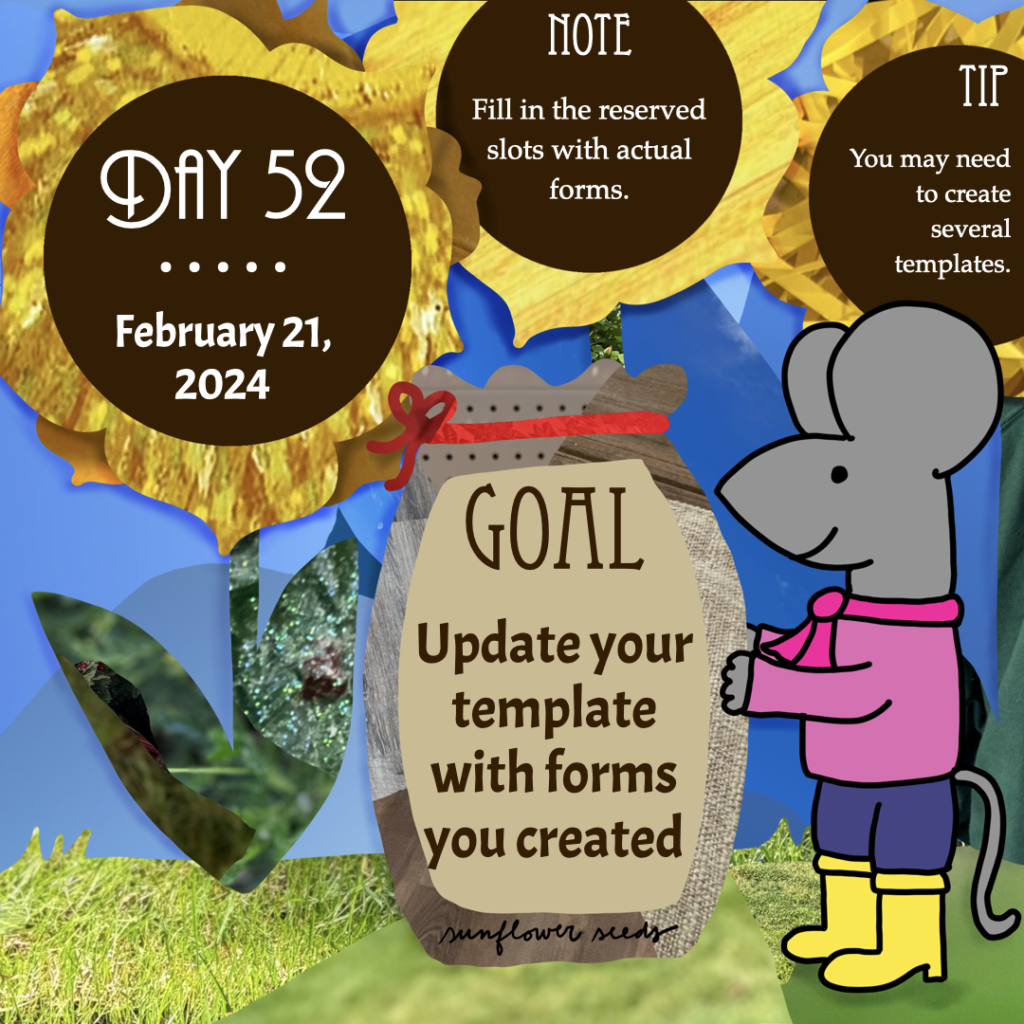
Goal: Update your template with forms you created
Note: Fill in the reserved slots with actual forms.
Tip: You may need to create several templates.
Work focus: Organize/Plan/Structure
Now that you have created forms for nominal inflections, the goal for today is to update your noun phrase template with the inflectional forms you’ve created and then test what happens when multiple inflections occur with a noun. Specifically, you need to make sure you’re happy with the ways inflections may interact with each other and how they interact with different nominal roots. Many inflectional markings appear quite frequently, so it’s good to test them multiple times and with multiple nouns to ensure you’re happy with how they sound (or look).
In languages I’ve created with multiple types of inflections, I find it helpful to make what some linguists refer to as a position chart. For instance, consider the following position chart:
| Definiteness | ROOT | Number | Case |
| bi (def.) o (indef.) | — (sing.) -(e)ts (pl.) | — (nom.) -ka/-ga (acc.) -(u)n (gen.) -(i)lo (dat.) |
The definiteness markers are not attached to the root, so they lack hyphens with their forms. The number and case markers are both suffixes. The plural marker occurs before the case marker. This kind of chart is especially helpful to get an overview of options to remind yourself what forms you created, but it won’t be able to show all the information, such as which phonological form of a suffix should be used. That information is better shown with tables of example nouns to demonstrate how suffixes appear in context.
If you have inflections that are more fused than a chart like this would allow, then it might be better to create several templates. For instance, if you have a plural marker that looks different, depending on the noun’s class, then you might find it easier to create different charts for each noun class—or, at least, different rows and cells within a table. Find a method that works for your own style of tracking features. These kinds of charts and “cheat sheets” are incredibly handy when you need to quickly reference grammatical information for your language.
